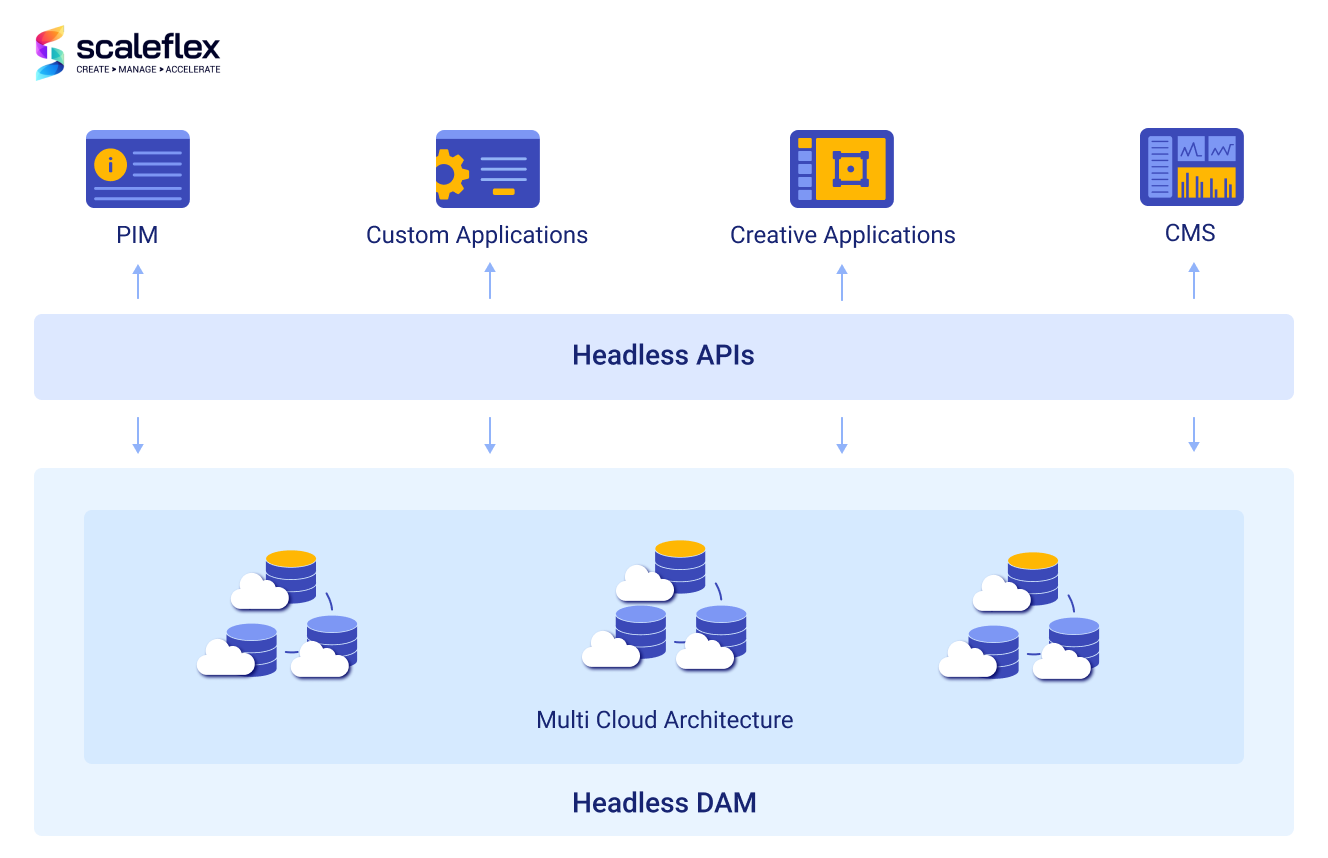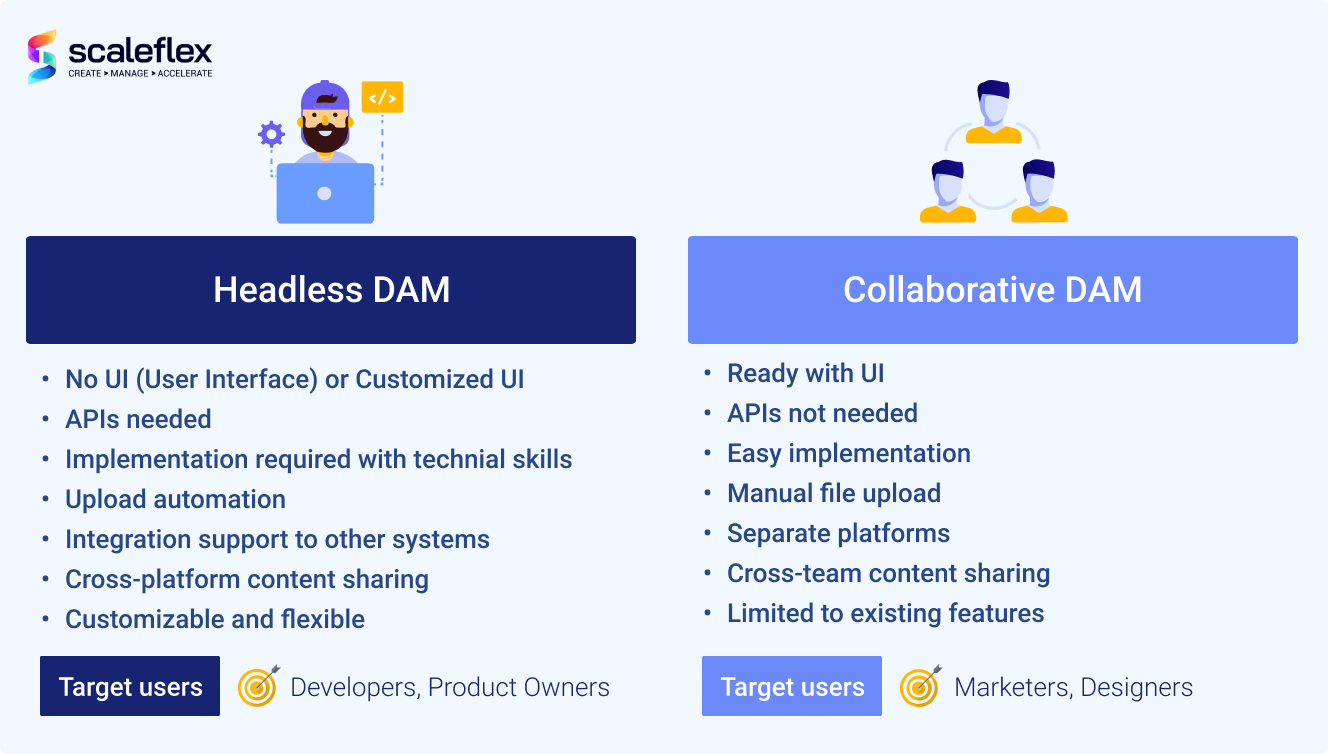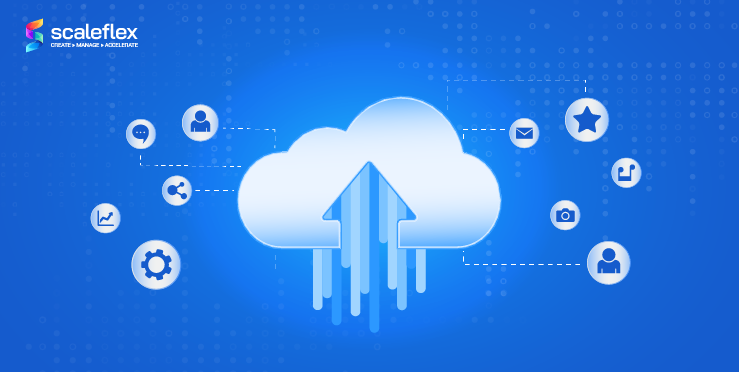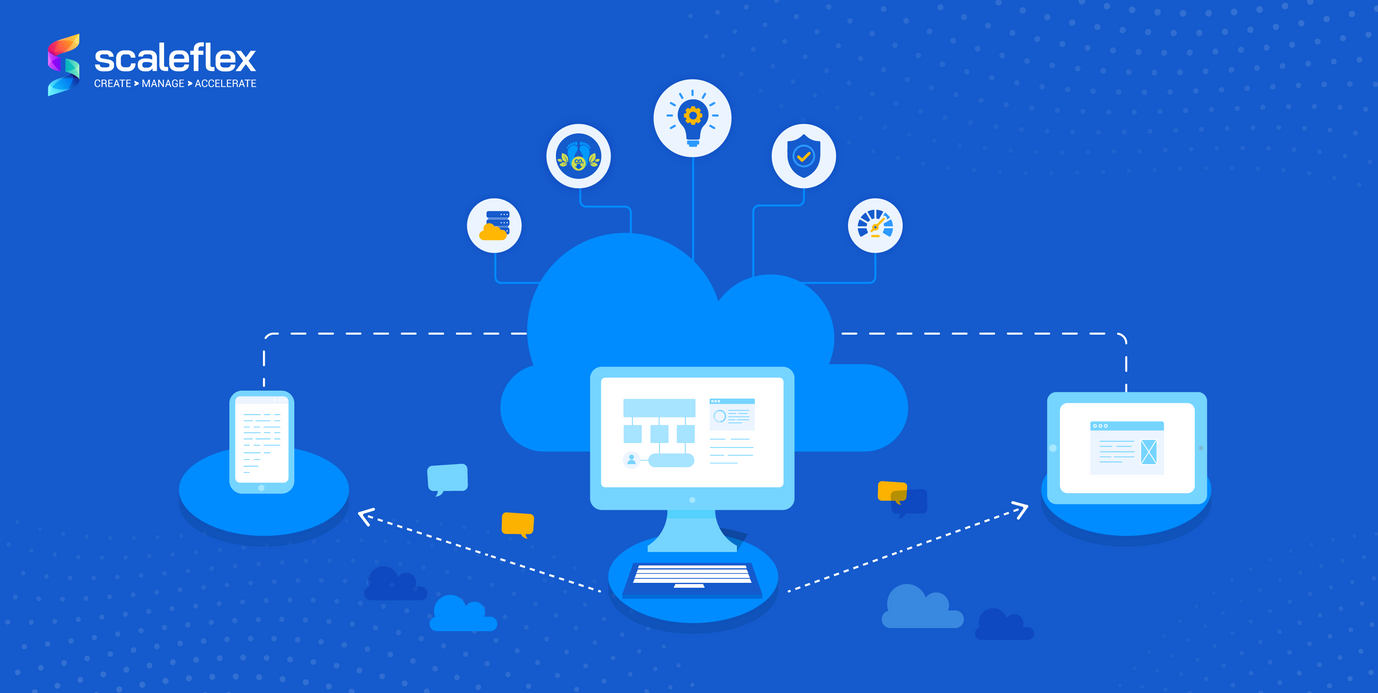Headless DAM For Scaling Your Digital Asset Management
Have you heard of the term Headless before? Are you curious as to what it means and how Headless software could potentially benefit your business, especially when already using a DAM platform?
In this article, we will focus on the use of Headless DAM, the technology behind it, and what are the benefits that this type of software has for its users.
An introduction to Headless Software
Headless software is a program that works on devices without a graphical user interface, and if not required, without a user interface at all. The software receives input and provides output through interfaces such as networks or serial ports.
The use of API (Application Programming Interface) plays a crucial role here, acting as an intermediary which handles all of the data that is transmitted and used in the process.
What the Headless software does is that it decouples the back-end functionality from the front-end interface, making it easier to access digital assets.
For example, a Headless content management (CMS) system is any type of back-end CMS where the content archive is separated from the presentation layer. Therefore, content that is kept in this type of CMS is delivered via APIs across several different devices.
A Headless customer relationship management (CRM) system doesn’t have a predefined user interface. It provides all underlying data aggregation needed to support a customer experience, but the end result can be delivered through third-party messaging channels or the user’s own custom applications.
With a Headless product information management (PIM) system, all of the product information is decoupled from the rest of the architecture and delivered through an API. This allows users to manage product data more quickly and enables developers to create custom eCommerce experiences.
What Is Headless Digital Asset Management (DAM) and DAM API?
Traditional DAM users log in to the DAM platform directly - via a User Interface - to access their companies digital assets, where they can then upload, manage and publish these assets. In contrast, Headless DAM is Digital Asset Management software without a User Interface that communicates and shares content with the back-end of applications via APIs in a cloud network. Due to this multi cloud architecture, Headless DAM is naturally agile and flexible, allowing for content to be shared (via API) to whichever application requires it, streamlining content workflows and boosting team efficiencies.
The Headless DAM’s first point of contact is the software services which later deliver content, in the format that is required by that downstream service. This is done with the use of an API, which provides the communication between different points.
While a Headless DAM is mostly suitable for developers and product owners, Collaborative DAM is another solution that fosters creativity and provides a media asset hub for marketers and designers.

Benefits Of Headless DAM
Headless DAM enables publishers on multiple channels to upload, process and publish digital content with minimal effort and maximum efficiency.
The software is one of the best solutions for brands and businesses that want to spread out vast amounts of digital assets across multiple platforms.
With possible features such as custom UI, cross-platform data sharing and streamlined workflows, the Headless digital asset management software delivers faster solutions for its users.
Additionally, a Headless DAM integrates effortlessly with other systems, making content operations and management easier for its users.
Who Can And Should Use Headless DAM?
Headless DAMs are mostly used by companies and businesses in e-commerce, publishing and marketing. Increasingly, we also see businesses who wish to achieve corporate environmental sustainability goals adopt an efficient DAM. The Headless DAM software can prove extremely efficient when used by organizations that work with multiple content systems.
They can be useful for individuals and teams that create and publish content for different touchpoints, such as photographers, influencers, educational institutions, museums, or marketplaces who have to work with internal and external stakeholders. Additionally, companies working with custom workflows can also benefit from using a Headless DAM, mostly because of the flexibility they provide.
More or less any business or brand that wants to serve its customers with images, video, audio and other rich media across multiple channels can benefit from adding a Headless DAM.
Using Collaborative And Headless DAM Together
Using a collaborative (traditional) and Headless DAM together can result in an increased efficiency, exceptional digital asset management, and delivering a media-rich experience for your customers.
This type of hybrid DAM will enhance the flexibility of the Headless API, and offer the perfect balance and features that customers will benefit from.
Such an approach offers users the option to simultaneously have control over when some of their digital assets are stored on site, and some of them are on cloud.
Headless implementation also means having a tool that enables collaborating, customizing workflows, managing, and much more.

Headless DAM Case Study
Gocar.be, a Belgian platform for online car advertisements that has more than 100,000 visitors each day, needed to redesign the user journey when creating ads. The main priority for the company was to integrate a multi-functional uploader with a gallery and image editor in React, while also needing an upload module with additional functionality for the back office in JS.
The solution that Gocar chose was a complete and fully customizable media asset widget and Headless software, whose modules saved weeks of development time for the company’s teams.
The tool helps Gocar store, share, process, and accelerate images, videos and static content on any web or mobile application across the globe.
Read the full case study here.
Conclusion
Today many small businesses and enterprises face the challenge of managing omni-channel online content efficiently. A headless digital asset management system makes it simpler for users to publish media files in multiple places, avoid limitations of scale at the front-end, and streamline collaboration within the organization.
In a nutshell, the main benefit of Headless DAM is that content creators and publishers can use it to manage huge amounts of digital assets, with less effort and more freedom.
Filerobot is a leading Headless DAM platform that vastly improves media asset workflows between various teams, and it's easy to use. Aside from fast integration, Filerobot’s modularity allows the customization of the Headless DAM to match specific business use cases.
FAQs
What does Headless web development mean?
Headless web development is when frontend developers don’t need to use backend structures. This way, they can have full focus on improving the user experience for websites.
What is the difference between traditional and Headless DAM?
The main difference is that the traditional DAM has a user interface and a Headless DAM doesn’t, offering much more flexibility. When using a traditional DAM, users search, share, download or reformat digital assets through the DAM itself. When using a Headless DAM, however, the features are instead located into other services that teams are already using, such as software or other custom solutions.
Is implementing Headless DAM difficult?
To implement a Headless DAM, one needs to have some technical skills, or use experienced developers. More and more businesses are already using Headless DAM, because it can enhance and scale asset procession. In turn, this allows its users to adapt to new technology trends, without having to disrupt the back-end that supports their content production.
Does Headless DAM need an API?
Yes, an API is required as it allows computer programs to access a DAM, and many other systems as well, such as CRM, CMS or PIM.
Is Headless DAM the same as open-source DAM?
Some may have this perception that headless DAM is a free DAM or is open source, but that is not the case. What headless means is just removing the user interface or "head" from the software, allowing it to work seamlessly in any operating system and environment.




